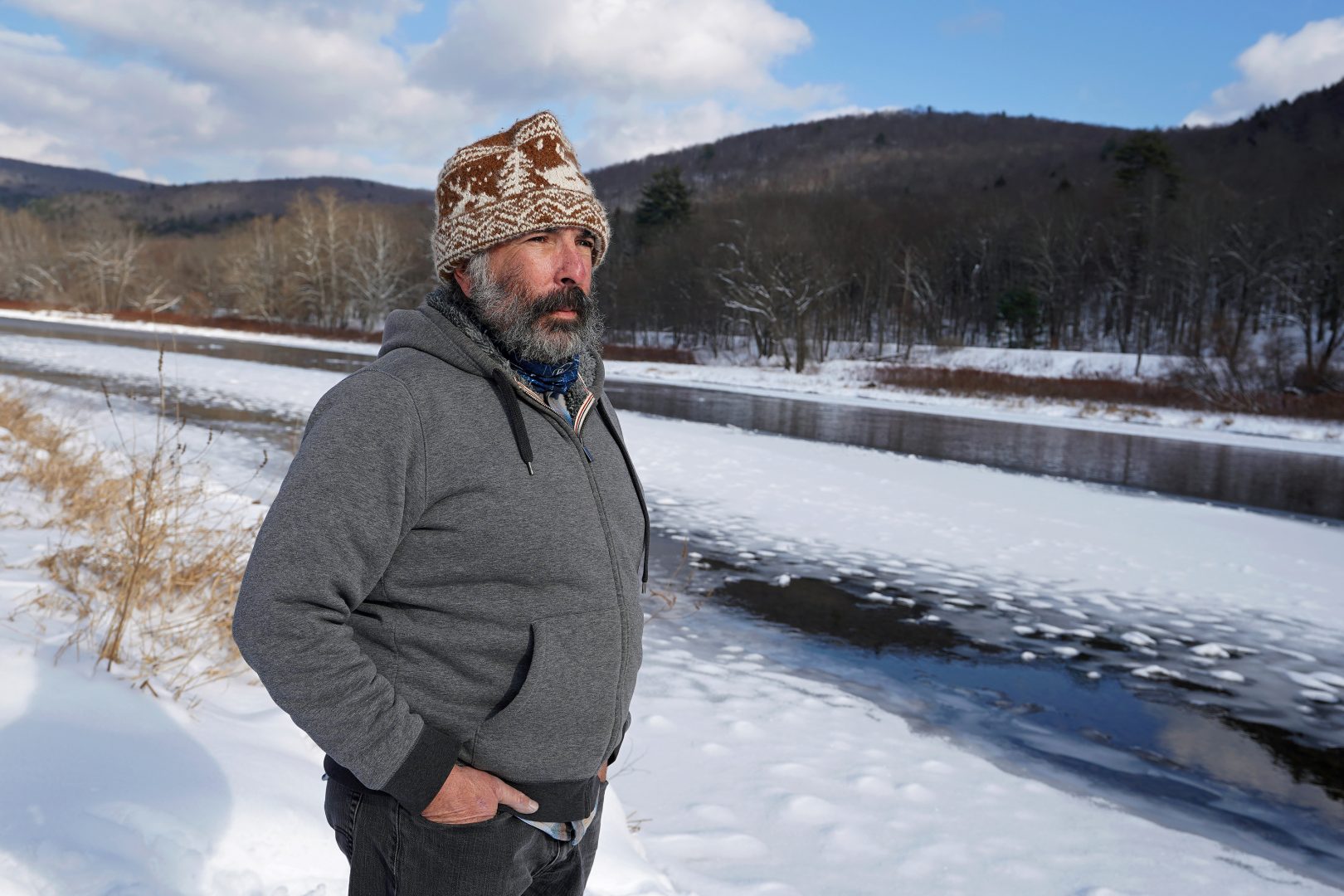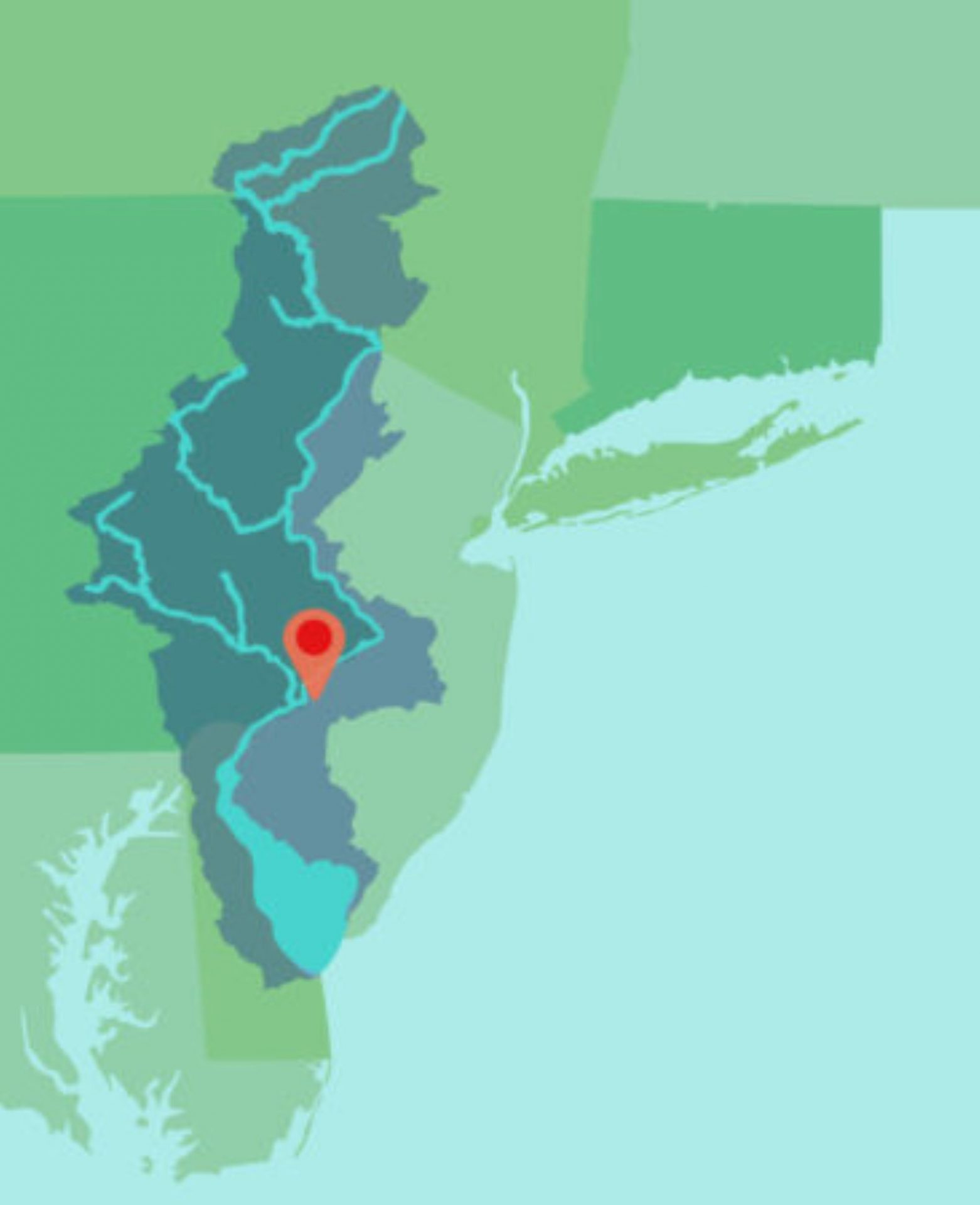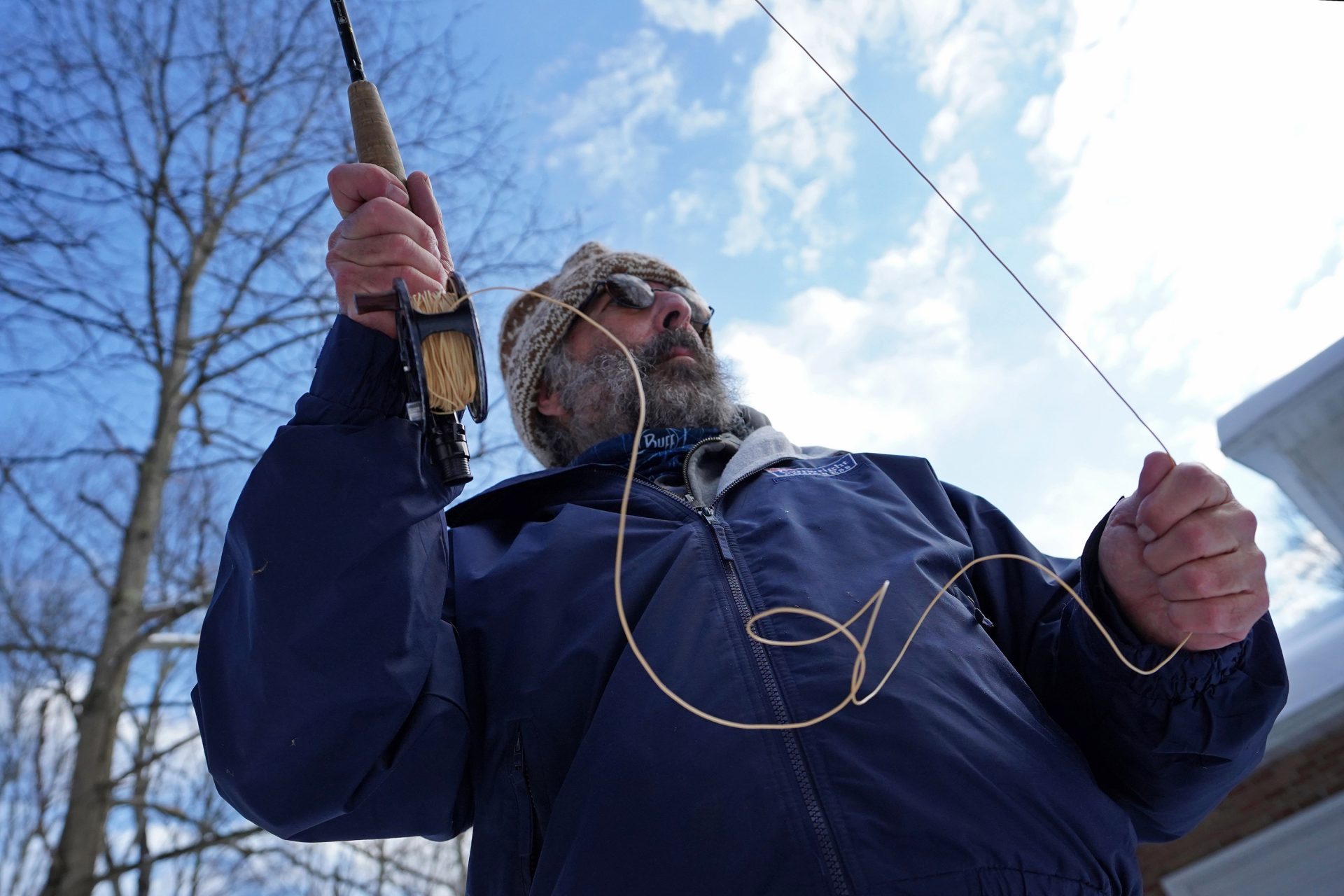
Steve Schwartz stands on his property right along the Delaware River in Equinunk, Pennsylvania.
Matt Smith / WHYY


Steve Schwartz stands on his property right along the Delaware River in Equinunk, Pennsylvania.
Matt Smith / WHYY

Matt Smith / WHYY
Steve Schwartz stands on his property right along the Delaware River in Equinunk, Pennsylvania.
WHYY asked five individuals to tell us about their visions for the Delaware River Watershed — what it is, and what it could be.
Steven Schwartz has been involved in various conservation and environmental projects over the last 15 years. Currently, he is leading the Upper Delaware Knotweed landscape scale research and management project sponsored by Friends of the Upper Delaware River; wrapping up his involvement in helping to coordinate the Pocono Kittatinny Cluster in the Delaware River Watershed Initiative; helping organize the Upper Delaware Earth to Sky Climate Change workshops sponsored by NASA and the National Park Service; lending a hand to the 2021 Upper Delaware BioBlitz; and preparing for maple sugaring season while keeping the home fire burning.
Listen to the story:
I live on the Delaware River near where the two branches meet in Hancock, New York. As a weekend visitor, I fly-fished for trout on the river for so many years that I felt like I knew every inch for many miles of the coldwater fishery.
Every day when you visit the river, it’s different. There’s an appreciation and a level of gratitude that fly-fishing has given me for understanding the river. Up here, we catch and release every fish. So I’d like to say that our job is making the fish smarter. And the fish on the Upper Delaware are very smart. The river is a destination, a worldwide destination, because people travel from all over the world to fly-fish here.
People that come here aren’t looking to catch lots of fish. They’re looking to catch amazing, beautiful, wild fish.
After I moved here full-time 10 years ago, I realized the Delaware River community is broad, multidimensional, and not linear. My perspective shifted from the banks of the river to the entire watershed.
Fifty years ago, Peter Berg, of the Planet Drum Foundation, coined the term bioregion: “A bioregion is defined in terms of the unique overall pattern of natural characteristics that are found in a specific place. The main features are generally found throughout a continuous geographic terrain and include a particular climate, local aspects of seasons, landforms, watersheds, soils, and native plants and animals. People are also counted as an integral aspect of a place’s life, as can be seen in the ecologically adaptive cultures of early inhabitants, and in the activities of present-day reinhabitants who attempt to harmonize in a sustainable way with the place where they live.”
The river is a political boundary, demarcating states, counties and townships. It is a physical boundary crossed by bridges, boats, and people in waders. As a boundary, it can define separate communities.
To my mind, the Upper Delaware Bioregion is synonymous with the Upper Delaware Watershed. A watershed is an area of land that drains all the streams and rainfall to a common outlet such as a river.
As the center of a watershed, the Delaware River is an ecosystem supporting countless aquatic and terrestrial species. It is a resource for human communities for both fun and industry. Thought of as a watershed, the Delaware River unites people. A watershed is a community.
The trout we have here are beautiful as a way to get us to help protect their environment, their habitat. We want to make sure that this place stays like it is forever and improves. That includes protecting headwater streams from development, making sure that regulations on sediment and erosion and runoff and septic and other things are in place to keep the waters clean and in the state that the fish and the bugs like. You could have a stream that supports trout in some ways but doesn’t support the food that they eat and you wouldn’t have the natural reproduction that they have. So you have to support the bugs as well.

Matt Smith / WHYY
Steve Schwartz demonstrates fly fishing technique in front of his home in Equinunk, Pennsylvania.
If you have a lot of runoff from a construction site into the river, the sediment can destroy the bugs’ habitat even if it doesn’t destroy the fish habitat immediately.
As a resource in common, the river can highlight the ethics of usufructuary rights, a legal term referring to the right of one individual to use and enjoy the property of another, provided its substance is neither impaired nor altered. In my view, we should all share the river and all that it provides while protecting the river for the common good.
In these times, the most important thing we can do is to continue to build and strengthen the community of the entire Upper Delaware Bioregion, with all of its diversity and history. By understanding what brought us here, what we cherish and how we go about fulfilling our life goals, we will better understand our commonalities and what we might set as goals to accomplish together. (Joshua Greene writes about this in his book “Moral Tribes.”) In particular, the pandemic has brought a large influx of new full-time residents from urban areas, outsiders, to the rural watershed bringing resources and new energy to the region. How can we help them integrate into the established culture while bringing fresh ideas that can help build a stronger community?
More info about the Delaware River Watershed Initiative and its investments in protecting and restoring lands in the upper watershed for the benefit of all of the communities of the bioregion can be found here. The Upper Delaware BioBlitz is featured here. More information about the FUDR knotweed project is here.
The audio was reported and produced by WHYY’s climate and environment reporter Susan Phillips.
This series of essays is part of the broader “From the Source” project and is supported by the Lenfest Institute, the National Geographic Society, and the William Penn Foundation.
StateImpact Pennsylvania is a collaboration among WITF, WHYY, and the Allegheny Front. Reporters Reid Frazier, Rachel McDevitt and Susan Phillips cover the commonwealth’s energy economy. Read their reports on this site, and hear them on public radio stations across Pennsylvania.
(listed by story count)
StateImpact Pennsylvania is a collaboration among WITF, WHYY, and the Allegheny Front. Reporters Reid Frazier, Rachel McDevitt and Susan Phillips cover the commonwealth’s energy economy. Read their reports on this site, and hear them on public radio stations across Pennsylvania.
Climate Solutions, a collaboration of news organizations, educational institutions and a theater company, uses engagement, education and storytelling to help central Pennsylvanians toward climate change literacy, resilience and adaptation. Our work will amplify how people are finding solutions to the challenges presented by a warming world.